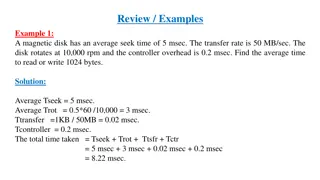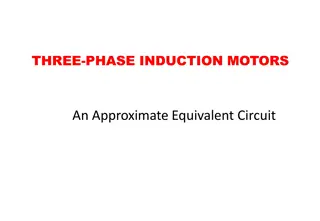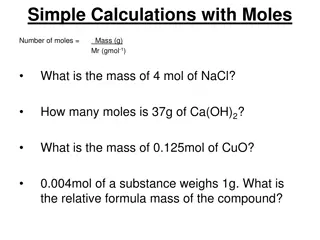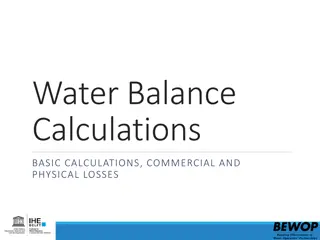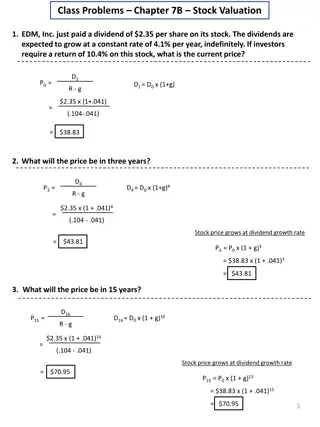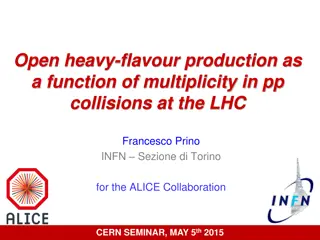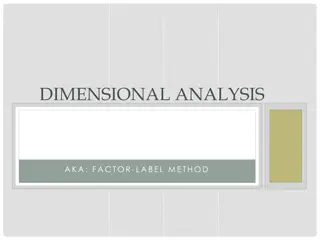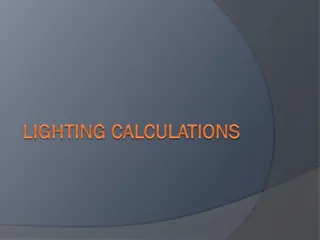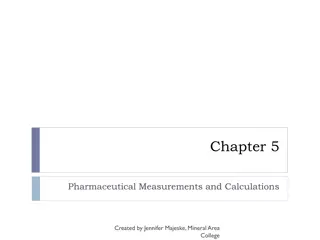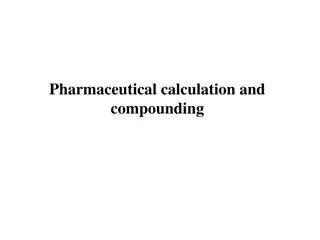Titrimetric Calculations
This content explains the principles and calculations involved in titrations, focusing on the law of equivalence and the basic requirements of titrimetric reactions. It covers the purpose of titrations and the importance of stoichiometry in accurate measurements. The concept of the equivalence point and the role of different solutions in neutralization are also discussed.
Download Presentation

Please find below an Image/Link to download the presentation.
The content on the website is provided AS IS for your information and personal use only. It may not be sold, licensed, or shared on other websites without obtaining consent from the author.If you encounter any issues during the download, it is possible that the publisher has removed the file from their server.
You are allowed to download the files provided on this website for personal or commercial use, subject to the condition that they are used lawfully. All files are the property of their respective owners.
The content on the website is provided AS IS for your information and personal use only. It may not be sold, licensed, or shared on other websites without obtaining consent from the author.
E N D
Presentation Transcript
TYPES OF TITRATIONS NAME OF THE INSTRUCTOR: U.NITHYA M.SC.,M.PHIL.,
Titrametric calculation: It is based on the following law of equivalence v1N1= V2N2 (or) V1M1 = V2M2 Where. N1 is the normality of analyte v1 is the volume of analyte N2is the normality of standard solution V2 is the volume of standard solution M1is the molarity of analyte M2is the molarity of standard solution.
Basic requirements of a titrimetric reaction: 1. The reaction should be rapid. 2. The reaction should follow a stoichiometric equation. Then only we can calculate exactly the amount of the reacting substance. 3. The reaction must proceed to early 100% completion on addition of the stoichiometric amount of the standard solution. 4. The completion of the reaction as indicated by the end point should be easily determinable. 5. The reaction should not be reversible
Principle: The purose of titration of a solution of a base with a standard solution of an acid is to determine the volume of the standard acid required exactly to neutralise a given volume of base. The point at which the acid neutralises the base completely is known as the equivalence point stiochiometric point or the end point. At the end point an aqueous solutions of the corresponding salt is obtained. In the titration between a strong acid and a strong base the resultant solution at the end point will be neutral and will have PH7. In the titration between a strong base the resultant solution will be basic and its Phwill be more than 7. Thus during a titration near the end point there will be a sudden change in the pHof the soution undergoing titration.
This facts helps us to select an indicator which will change its colour with in the range of pHchange occurring during a titration. we can measure the pHof the solution undergoing titration after each addition of the titrant and plot pHagainst the milli-litres of titrant added. such a curve will have a sharp rise or fall in it which will indicate the end point. Thus the end point in an acid-base titration is determined by using indicators or using a potentiometer. A third method is to measure the conductivity of the solution that is undergoing titration and to draw a graph between the conductivity and the milli-litres of the titrant added. The break in the graph indicates the end point.
Eg: Titration between Feso4and ce(so4)2. ----------------- Fe3++ e- Fe2+ ----------------- ce2++ e- ce3+ ----------------------------------------------------------------------------------------------------- Fe2+ + ce2+ ---------------- Fe3++ ce3+ Ferrous. Ceric. Ferric. Cerous ------------------------------------------------------------------- end point is determined in two ways 1.The potential of the system changes abruptly in the neighbourhood of equivalence point.
E = EMF in volts V = volumetric of ceric solution in ml EP = End point A=Excess Fe2+ B = Excess ce4+
2. We can use indicators to determine the end point in redox titrations. The indicators used to determine the end point in redoc titrations are called redox indicators. Eg: i) diphenyl amine Fe2+against K2cr2o7. ii) ferroin indicator Fe2+against ce4+
Fig. 1. Fig.2 (Ferroin)





